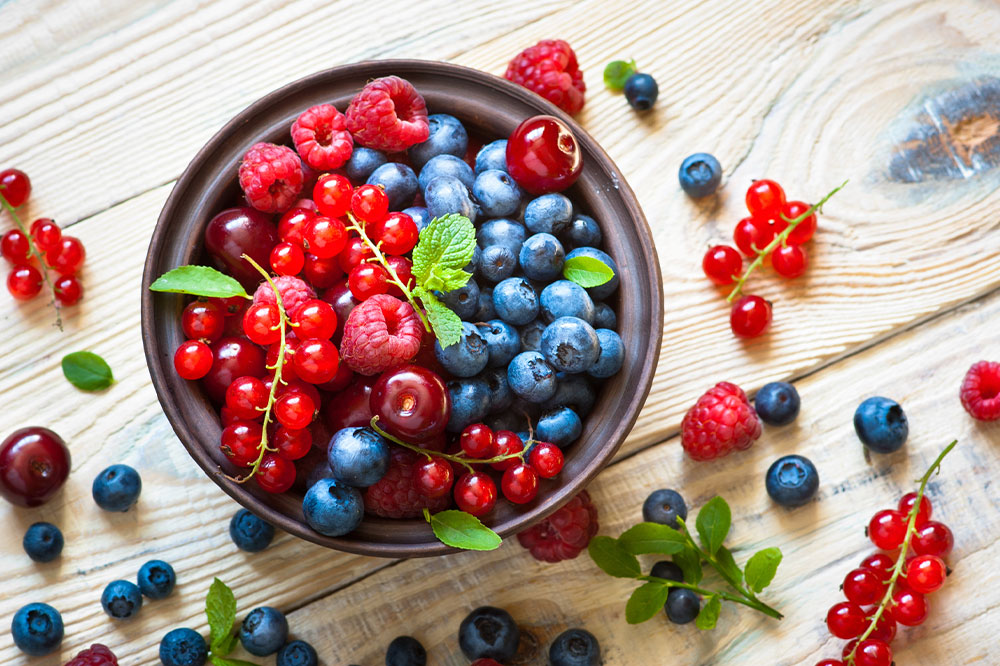10 best foods to manage hemophilia and its symptoms

Hemophilia is a genetic disorder that negatively affects the body’s ability to stop blood clotting. Here, the body is unable to prevent excessive bleeding when a blood vessel is injured, leading to symptoms like easy bruises and swelling. The condition is usually diagnosed at a young age. Hemophilia requires a holistic approach to care, including a keen focus on nutrition. There are a range of foods and nutrition that is known to empower those grappling with hemophilia.
Best foods for hemophilia
Lean proteins
Foods like poultry, fish, and legumes offer a rich source of lean protein without the added burden of excessive fat. Plant-based sources like legumes and tofu are also loaded with proteins. These proteins contribute to muscle strength and tissue repair, aiding in the body’s ability to recover from potential bleeding incidents.
Fruits
Fruits contribute to one’s overall health, but those that are rich sources of vitamin C assist in the absorption of iron. Citrus fruits like oranges, pineapples, kiwis, lemons, and lime offer a tasty and vitamin C-packed punch, enhancing the body’s connective tissue and supporting blood vessel health. Strawberries, blueberries, tomatoes, melons, and bell peppers are also excellent plant-based sources that offer a refreshing way to boost the immune system and promote healing.
Iron-rich foods
An estimated 0.75 micrograms of iron are lost every 15 ml of blood. Iron is necessary for supporting the body’s production of red blood cells and combating anemia, often accompanied in hemophilia. Incorporating iron-rich foods into one’s daily intake can help replenish iron levels in the body. Some of the best sources of iron include lean meats, poultry, legumes, fortified cereals, dark chocolate, white beans, baked potatoes, liver, dried beans, grains, and raisins.
Foods rich in vitamin B6 and B12
Consuming foods rich in vitamins B6 and B12 is integral for red blood cell production. Vitamin C complements this by enhancing iron absorption, improving blood clotting, and boosting collagen production. Maintaining optimal collagen levels can mitigate bruising in individuals with hemophilia. Fish, meat, eggs, poultry, peas, fortified bread, cereals, and beans are all rich sources of these nutrients.
Vitamin K-rich foods
Vitamin K is a fat-soluble vitamin that helps to produce a blood-clotting protein called prothrombin, which helps to reduce episodes of excessive bleeding. Individuals with hemophilia may experience prolonged bleeding after injuries or surgeries, as well as spontaneous bleeding into joints and muscles. Some of the common signs of hemophilia are easy bruising and frequent nosebleeds. In severe cases, it can also cause deep internal bleeding. So, one is advised to eat foods that boost blood clotting. Some common vitamin-K-rich foods include asparagus, broccoli, cabbage, canola, and alfalfa.
Leafy greens
Leafy greens like spinach, lettuce, kale, and collard greens are powerhouses of vitamins and minerals, including vitamin K. Incorporating these greens into meals can help manage hemophilia symptoms.
Whole grains
Whole grains, including quinoa, brown rice, barley, bran, and oats, offer sustained energy release and are rich in fiber, promoting digestive health. Laden with essential minerals such as zinc and magnesium, these grains play a crucial role in supporting the body’s maintenance and repair functions. Beyond that, the fiber and nutrients found in these grains contribute to stabilizing blood glucose levels, lowering the risk of heart disease and stroke, and thereby averting potential complications linked to hemophilia.
Dairy or dairy alternatives
Hemophilia also leads to joint pain and swelling, and they often affect one’s mobility. So, having foods that help strengthen joints can also help in managing the symptoms of hemophilia. Calcium is essential for maintaining strong bones and teeth , and its deficiency heightens the risk of diseases linked to internal bleeding and muscle damage. Milk and milk products are known rich sources of calcium. Incorporating dairy products like yogurt and cheese or fortified dairy alternatives, including plant-based milk like almond milk, coconut milk, and others, into one’s food intake can help meet the body’s calcium needs.
Healthy fats
While moderation is vital, including healthy fats in one’s daily food intake can benefit those with hemophilia. Avocados, nuts, and olive oil are rich in omega-3 fatty acids, which contribute to heart health and provide a source of energy.
Water or herbal teas
Staying hydrated is important for individuals with hemophilia. Water helps maintain blood volume and ensures optimal circulation, reducing the risk of bleeding. Herbal teas, green teas, and infused water can be flavorful alternatives for those who find plain water less appealing.
Eating tips for hemophilia patients
While what one eats is important, it is also essential to practice mindful eating habits. Consider the following recommendations:
- It’s best to avoid heavy gravies, sauces, and toppings with too many calories. Try to bake, boil, or grill foods, including poultry and fish, instead of frying them.
- One can reduce the serving sizes of one’s meals to avoid overeating and aggravating the symptoms of hemophilia.
- One can avoid snacks that are high in fats and lack nutritional value, including burgers, chips, and other fast and packaged foods.
- One can avoid sugary snacks, processed foods and sweets, and foods rich in saturated fat, which provide no nutritional value. One should also read food labels to avoid hidden sources of excess calories or sugar, such as packaged juice or soft drinks.
- One is advised to chew one’s meals properly and eat slowly. This mindful approach to eating supports overall health and maintains a healthy digestion process.
The severity of hemophilia varies, and a holistic approach that blends healthcare treatments and physical therapy with lifestyle adjustments is crucial. Having said that, it’s important to consult a nutritionist before changing one’s food habits. A professional considers one’s condition, age, allergies, and other health factors and gives a personalized plan that can ensure optimal resilience against the condition.


